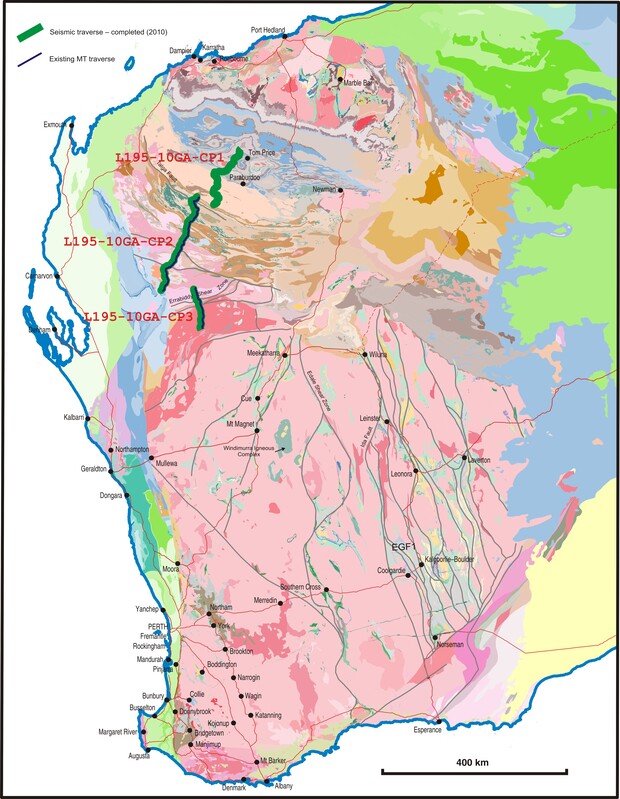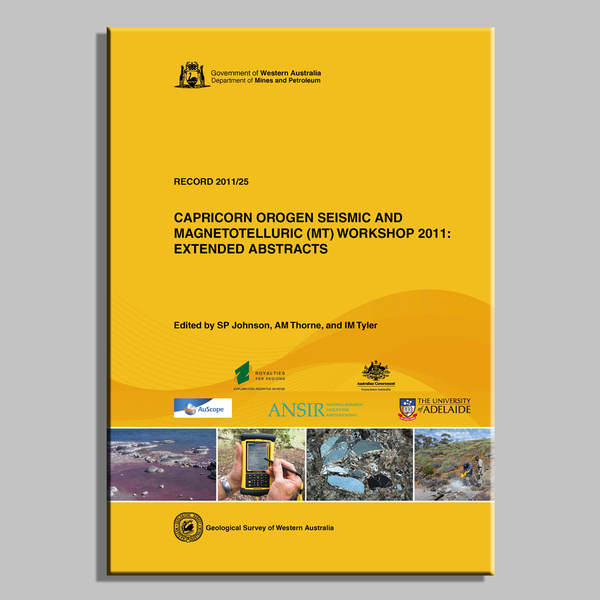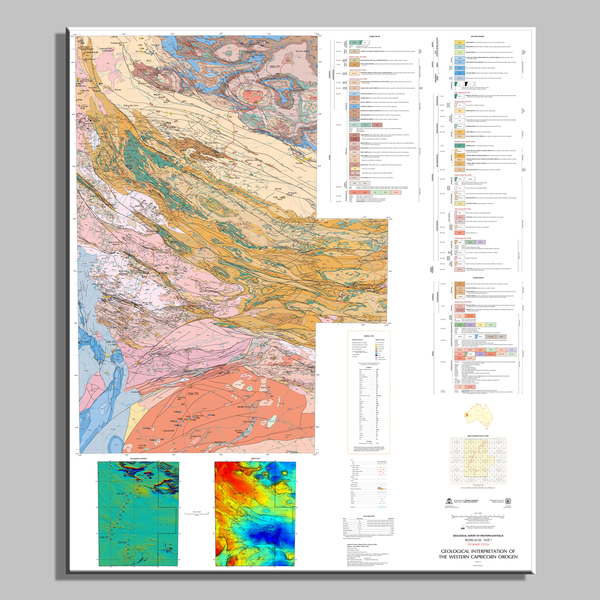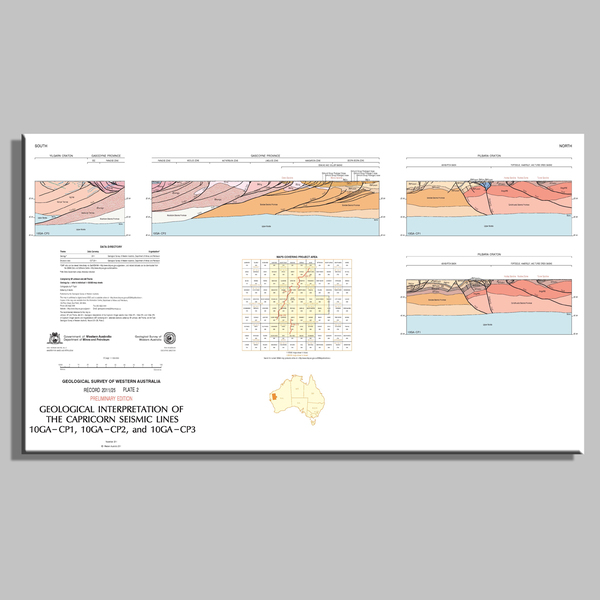This survey was conducted across the southern Pilbara and Gascoyne regions from April to early July 2010. The addition of this survey to the existing set improves the understanding of the crustal structure of Western Australia.
The Capricorn Orogen deep seismic reflection and MT surveys were funded through the Exploration Incentive Scheme (EIS) and through the Australia Federal Government's National Earth Science Infrastructure Program (AuScope). Acquisition and interpretation was managed by Geoscience Australia (GA) and the Australian National Seismic Imaging Resource (ANSIR) through the National Geoscience Agreement.


The main objectives for the Capricorn surveys were to image the:
- overall structure and dip of the suture between the Yilgarn Craton and Gascoyne Province (Errabiddy Shear Zone), and the suture between the Pilbara Craton and the Gascoyne Province
- depth and shape of the Minnie Creek batholith and other Proterozoic granite intrusions
- nature of reactivated Fortescue Group growth faults in the southern Pilbara
- dip of major faults that mark the boundary between the Pilbara Craton and the Ashburton Basin
- deep crustal structure of the Ashburton Basin
- deep crustal structure of the Edmund and Collier Basins and nature of major growth faults, such as the Talga Fault
The Capricorn deep seismic surveys were carried out in three separates lines (L195 10GA-CP1, L195 10GA-CP2, and L195 10GA-CP3).
The data have now been interpreted and the preliminary results released at a public workshop held at the department’s Perth headquarters on 23 November 2011.
The migrated uninterpreted and interpreted seismic sections are available for download (in multiple formats) directly from Geoscience Australia. All MT data are available for download from the Airborne Geophysics Index (MAGIX) layers using GSWA’s interactive map-viewing application GeoVIEW.WA.
Publications
Preliminary interpretations of the three Capricorn Orogen deep crustal seismic lines (10GA-CP1, 10GA-CP2, and 10GA-CP3) were released at a public workshop held at the department’s Perth headquarters in November 2011. The workshop consisted of 10 presentations and was accompanied by the release of a series of extended abstracts and geological plates. All of the data, including the 10 PowerPoint presentations, can be downloaded from the links below.
Capricorn workshop (November 2011) — presentations
Contact
For more information contact:
geological.survey@dmirs.wa.gov.au



